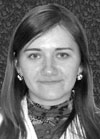Benefits of N.N. Efimenko's game method for preschool physical education
Фотографии:
ˑ:
Teoriya i praktika fizicheskoy kultury №2 2017, pp.86-88
UDC 796.011.3
Dr.Med, Associate Professor E.Y. Dyakova1
V.S. Shchigartsov1
1National research Tomsk state university, Tomsk
The study was designed to assess benefits of the Theatre of Preschool and Junior Schoolchildren’s Physical and Health Education method by N.N. Efimenko. Reference Group of Preschool Education Establishment #3 based in Tomsk was trained under the “Birth to School” education program by N.E. Veraksa, T.S. Komarova and M.A. Vasilyeva, with the trainees’ progress being tested by the standard set of preschool progress tests including the 10 m sprints, 30-second back-down trunk lifting test, standing long jump test, and 1-kg stuffed ball throwing test.
For the study period of September 2015 to April 2016, the Study Group progress was found significantly better as verified by the 30-s back-down trunk lifting test. As reported by the physical training instructor, the Study Group showed higher interest to the practices versus the RG. The children’s sickness statistics showed domination of respiratory system diseases followed by parasitic and infectious diseases and, in the third place, by allergic and gastrointestinal system diseases. Many children were diagnosed with musculoskeletal system, cardiovascular system and nasopharynx system disorders.
Questionnaire survey of the families and tutors of the trainees showed the respondents believing the children are too sick due to reportedly low immunity and inadequate physical education in the families. 84% of the respondents appreciated the preschool health improvement and disease prevention system as necessary and beneficial.
Keywords: preschoolers, physical education, test, Efimenko’s method.
References
- Antonova L.N. Psikhologicheskie osnovaniya realizatsii zdorovesberegayushchikh tekhnologiy v obrazovatelnykh uchrezhdeniyakh [Psychological bases of implementation of health promotion technologies in educational institutions]. Moscow: MSRU publ., 2004, 100 p.
- Dyakova E.Y., Zakharova A.N., Lalaeva G.S. Otsenka programmy uskorennogo obucheniya plavaniyu detey mladshego shkolnogo vozrasta [Evaluation of accelerated swimming programs for primary schoolchildren]. Fizicheskaya kultura: vospitanie, obrazovanie, trenirovka, 2014, no. 5, pp. 36-38.
- Karaseva T.V. Sovremennye aspekty realizatsii zdorovesberegayushchikh tekhnologiy [Modern aspects of implementation of health promotion technologies]. Nachalnaya shkola publ., 2005, p. 75.
- Dyakova E.Yu., Zakharova A.N. Fiziologicheskie osobennosti adaptatsii pri kombinirovannom podkhode v organizatsii fizicheskogo vospitaniya [Physiological characteristics of adaptation at multi-modal approach in organization of physical education process]. Teoriya i Praktika Fizicheskoy Kultury, 2014, no. 6, pp 46-48.
- Illarionova A.V., Kapilevich L.V. Osovennosti vnutrimyshechnoy i mezhmyshechnoy koordinatsii pri dosirovanii ulisiy v usloviyakh neustoychivogo ravnovesiya [Distinctive features of intramuscular and intermuscular coordination at power graduation in the context of balance training]. Teoriya i Praktika Fizicheskoy Kultury, 2014, no. 12, pp. 44-46.
- Karvunls Yu.A., Kapilevich L.V. Sotoyanie i perspektivy razvitiya aktivnogo turizma v molodezhnoy srede Tomsko oblasti [State and prospects of development of active tourism among youth of Tomsk region]. Teoriya i Praktika Fizicheskoy Kultury, 2014, no. 10, pp. 62-65.




 Журнал "THEORY AND PRACTICE
Журнал "THEORY AND PRACTICE